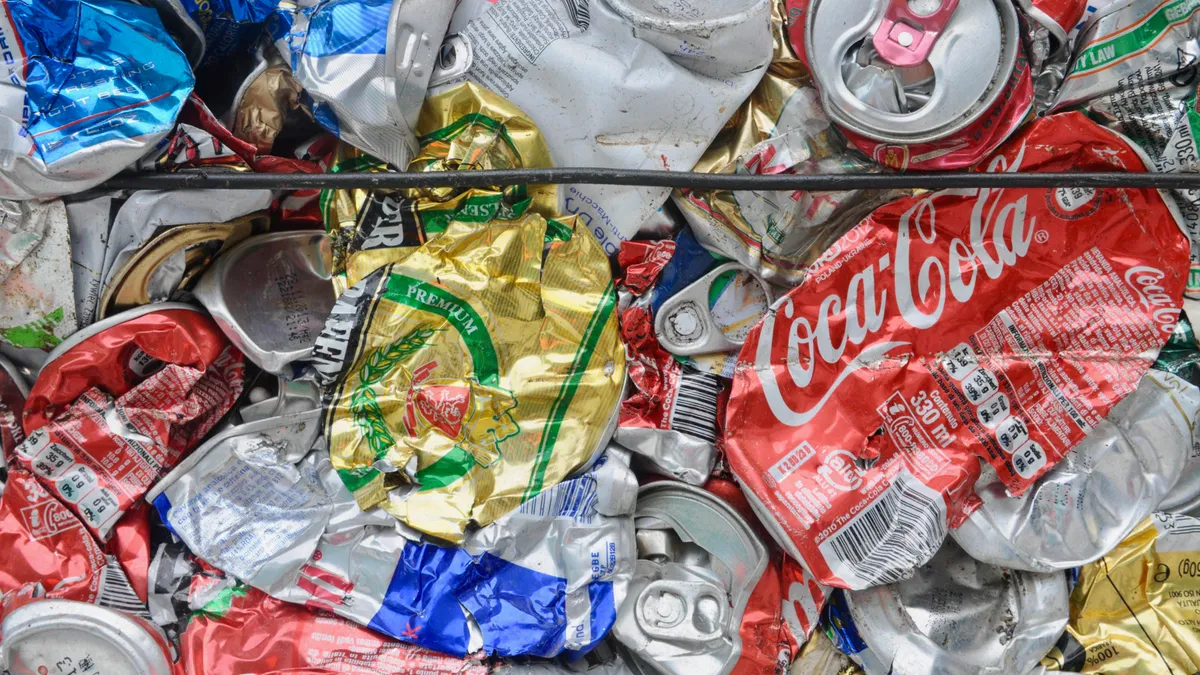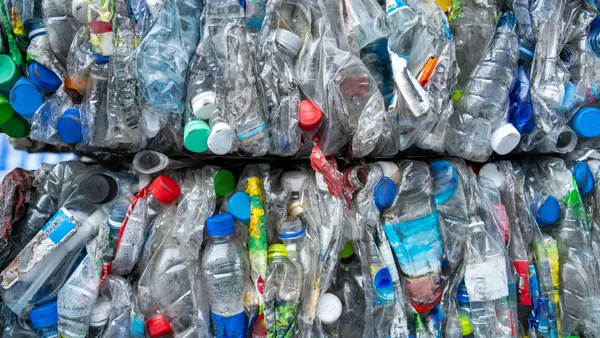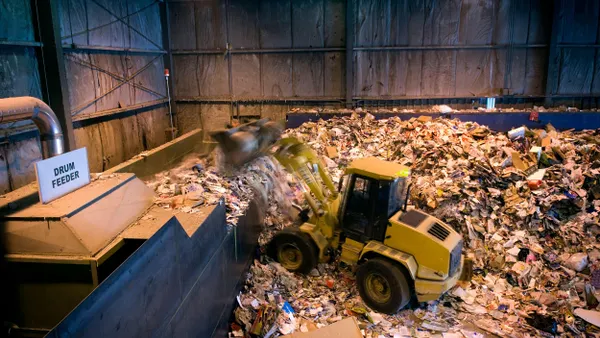Dive Brief:
- A report from the Can Manufacturers Institute says the negative financial impacts that bottle bills might have on MRF operators could be offset by sharing a cut of beverage container scrap revenue with MRFs or by paying them the deposit value for some of the containers they continue to process.
- CMI advocates for bottle bill legislation that includes similar MRF compensation methods, such as a newly introduced bill in Illinois. Using a model MRF as an example, the report calculates different “break even” points where revenue from deposit return systems could “fully offset” financial impacts to both the MRF and any of its customers, such as municipalities.
- The CMI report is meant to respond to and “build off of” a separate report released in 2022 from the National Waste & Recycling Association, which says bottle bills reduce MRF revenue because they divert high-value materials away from operators, in turn increasing curbside recycling costs and potentially leading municipalities to discontinue such programs.
Dive Insight:
State legislative sessions in 2024 are expected to bring more bottle bill introductions nationwide.
CMI aims to build consensus among MRFs and other stakeholders in an effort to pass container deposit laws, expanding programs in states with bottle bills, in addition to creating bottle bills in states that have not previously had them. Discussions are active in places like Illinois, Minnesota and Washington, said Scott Breen, CMI’s vice president of sustainability.
Breen acknowledges that bottle bills represent a “fundamental change” in how containers are recycled, and newly introduced or updated bottle bills can have an impact on MRFs, particularly on processing and commodity revenues. “We understand why MRFs have concerns,” he said.
Yet CMI has also positioned itself as a strong supporter of bottle bills, which the organization calls recycling refund systems. CMI sees such systems as a highly effective way to increase recycling rates, collect cleaner material and get back enough aluminum to continue making containers.
“We believe the system can be set up such that it's accessible to all stakeholders and it is convenient and equitable to all consumers and can deliver large amounts of high quality material,” he said.
NWRA says bottle bills generally create stress for MRFs, many of which designed their facilities and business models with the expectation that they would handle high-value beverage containers. “One of the things that a lot of people don't recognize about MRFs is that you can't just change up the mix of materials and expect them to have the same throughput capacity,” said Anne Germain, NWRA’s chief operating officer.
The 2022 NWRA study called for evaluating policies that could potentially offset negative MRF impacts. CMI says its 2024 report, prepared by RRS, answers that call. RRS also wrote the original NWRA report in 2022.
Both reports’ calculations are based on the same model “average-sized” MRF with a throughput of about 93,600 tons per year. Eureka Recycling, a nonprofit recycler from Minnesota that supports container deposit legislation, was a consultant on the CMI project.
CMI calculated several break even scenarios for the model MRF based on 5-cent and 10-cent deposit values and other factors. In order for the model MRF to break even, it would need to collect an average of about 18% of the scrap value from deposit program beverage containers or about 30% of the refund value from beverage containers that continue to flow through the facility.
Those numbers apply if the MRF is also able to market and sell the processed beverage containers, otherwise the MRF would need to collect about 25% of scrap value or 46% of the refund value, according to the report. CMI points out that the model MRF doesn’t account for regional and market fluctuations in commodity and processing revenues, among other variables.
Germain said the association recognizes CMI’s report is working to “be inclusive” of MRF concerns when promoting bottle bill legislation. However, Germain said it was not clear whether the MRF compensation methods presented in CMI’s report are meant to be a permanent solution or a temporary one.
Some container deposit systems already incorporate MRF compensation methods: California allows MRFs to receive deposits for certain containers based on a specific bale weight formula, for example.
When MRFs are allowed to keep the deposit, “financially that works out better for us and it works out better for the municipality,” Germain said. Though residents don’t get their deposit back because they choose to put their containers in their curbside bins, “they don’t have to worry about their curbside prices going up.”
Regardless of the formulas in place, NWRA stopped short of promoting any particular bottle bill model.
NWRA sees bottle bills as inconvenient and costly to residents and municipalities when compared with curbside recycling systems. “It's already such a volatile industry, we’d like to see a little bit of stability. Ultimately, a bottle bill duplicates a system that's already in place,” Germain added.
Resa Dimino, the managing principal at RRS who worked on both projects, said CMI and NWRA’s reports “both fuel productive discussions, because that’s the direction we need to be moving. We need to be asking, ‘how bad is this problem, and how can we address it?’” she said. “At the end of the day, deposit return systems outperform any other recycling system, but we have to start looking at policy options that are creatively tackling some of these other challenges.”











